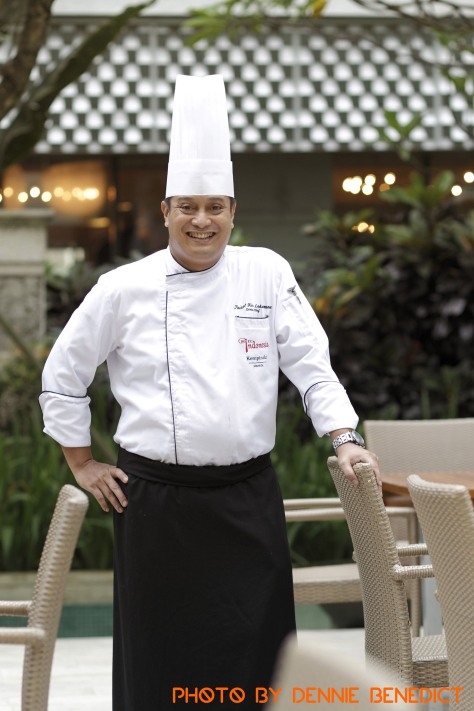Describing how rich Indonesian cuisine is will not complete if you forgot to mention the country’s much-loved bubur ayam. Hotel Indonesia Kempinski has a story about how bubur ayam can become so influential in this five-star hotel for so many decades.
Bubur ayam becomes the staple food for Indonesians since time immemorial. Most likely it was introduced by the Chinese immigrants eons ago and that can be seen obviously from the condiments.

The traditional formation of bubur ayam usually consists of sliced chicken (some prefer to dice it), youtiao (Chinese cruller) or commonly known as cakwe in Indonesia, tongcay (pickled cabbage), celery, chopped scallions, fried shallots, fried soybeans, hard-boiled eggs, satays (gizzard, quail’s eggs, or chicken intestine), Indonesian crackers, and optionally added with sweet or salty soy sauce. From what we can see, more than 50% of the condiments are of Chinese cuisine influence.
Mostly in Jakarta however, the bubur may be cooked without involving too much spice. The traveling vendors usually rely on the additional soup made from chicken stock, coconut milk, and turmeric; making it yellow in color. It’s quite in contrast with West Javanese style that relies much from the spicing during cooking and doesn’t use this additional soup at all.
Regardless when and where it was started or what the style is, bubur ayam has made its way all the way to the top for years. Since 1962, it becomes the ultimate choice for Hotel Indonesia’s guests as a favorite dish. The congee itself reserves the right to be called Bubur Ayam HI, using the abbreviation of Hotel Indonesia itself.
Now under the management of Kempinski, the bubur ayam legacy continues strong. The old recipe is maintained under high standard with some tweaks made to make it even more inviting.

Sous Chef Faizal Kus Laksmana told us, “The original recipe was using only the addition of chicken stock and is available upon request, but we also want to give an approachable sense by providing the santan and turmeric soup as the condiment”.
Creating bubur ayam is actually a painstaking process of slow cooking and how to mix the right ingredients to make the rice congee alone already delectable, not to mention that there’s a lot of condiments to be prepared as well.
“Sometimes elderly guests came here to ask the original version. We met up with their demands and they were happy to remember that the taste was exactly the same like it was in the past”, said the chef again.
The origin of how the bubur ayam here can be so influential was traced back from the time when the hippest people of Jakarta visited the restaurant downstairs after having their all night long parties on the 16th floor of the hotel in Nirwana Lounge. Famished, they asked the staffs to make them bubur ayam for breakfast and that’s how it have since became a customary dish for everyone whenever they visit Hotel Indonesia until this very day.
Hotel Indonesia Kempinski realizes that no matter how familiar the dish may be for Indonesians, but the values behind it are simply too indispensible to not be preserved and shared.
Bubur Ayam HI is available daily at Signatures Restaurant and as a la carte dish.
—–
HOTEL INDONESIA KEMPINSKI | Jalan M.H. Thamrin 1, Jakarta | T: +62.21.2358.3800 | www.kempinski.com
—–
Featured in THE FOODIE MAGAZINE July 2014 edition
Download it for free here via SCOOP!
Photography by Dennie Benedict


Leave a comment